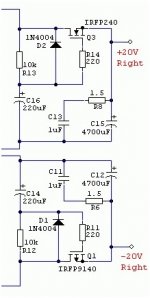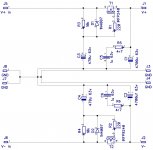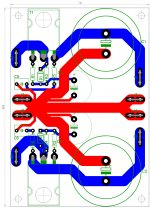It's really pity not to integrate needed protection in a cap multiplier, like over current and DC offset (loudspeaker) protection.
You mean speaker protection in general should be used? Protection would be placed after amp output not in front where cap multiplier is.
I want to go with a SS switch one of these days like vzaichenko's 21st century protection.
You mean speaker protection in general should be used? Protection would be placed after amp output not in front where cap multiplier is.
I want to go with a SS switch one of these days like vzaichenko's 21st century protection.
Why not in front?
A cap multiplier uses series active device (bjt or mosfet) and it could be switched off. You need a DC offset detector on the power amp output and triggering circuit to switch off the cap multiplier (or other type of series PS regulator). This was used by John Linsley Hood in his 80W mosfet amp and I use it in my PS regulator here http://www.diyaudio.com/forums/solid-state/182554-thermaltrak-tmc-amp-22.html#post3907062.
It works very effectively, ones it saved my loudspeaker and amp(some cold solder in the amp caused full DC on the amp output).
It's simple to add overcurrent protection too.
The main requirement is not to have to big caps after the cap multiplier.
Why not in front?
A cap multiplier uses series active device (bjt or mosfet) and it could be switched off. You need a DC offset detector on the power amp output and triggering circuit to switch off the cap multiplier (or other type of series PS regulator). This was used by John Linsley Hood in his 80W mosfet amp and I use it in my PS regulator here http://www.diyaudio.com/forums/solid-state/182554-thermaltrak-tmc-amp-22.html#post3907062.
It works very effectively, ones it saved my loudspeaker and amp(some cold solder in the amp caused full DC on the amp output).
It's simple to add overcurrent protection too.
The main requirement is not to have to big caps after the cap multiplier.
Thanks for clarifying. Now how to make it simple in keeping with thread's focus of peasy?
More listening impressions with the cap multiplier. It seems to make the contrast much much better so the "blacks are blacker". I am hearing very low level detail that was probably garbled in PSU noise/ripple before. For the low cost of $4 in MOSFETs and maybe $2 in caps - this is one of the best sound quality upgrades for the dollar. Also, if you listen to rather quiet passages and at lower levels the cap multiplier is a great enhancement.
Build this cap multiplier and and have a listen - it makes a difference. Easy Peasy - no excuse not to. You don't need a PCB. In fact, I think a PCB will take more space here all you need to do is bolt the IRFP to some convenient location inside your case for some heat dissipation (it's not much). Solder up the 3 pins which hold it all together.
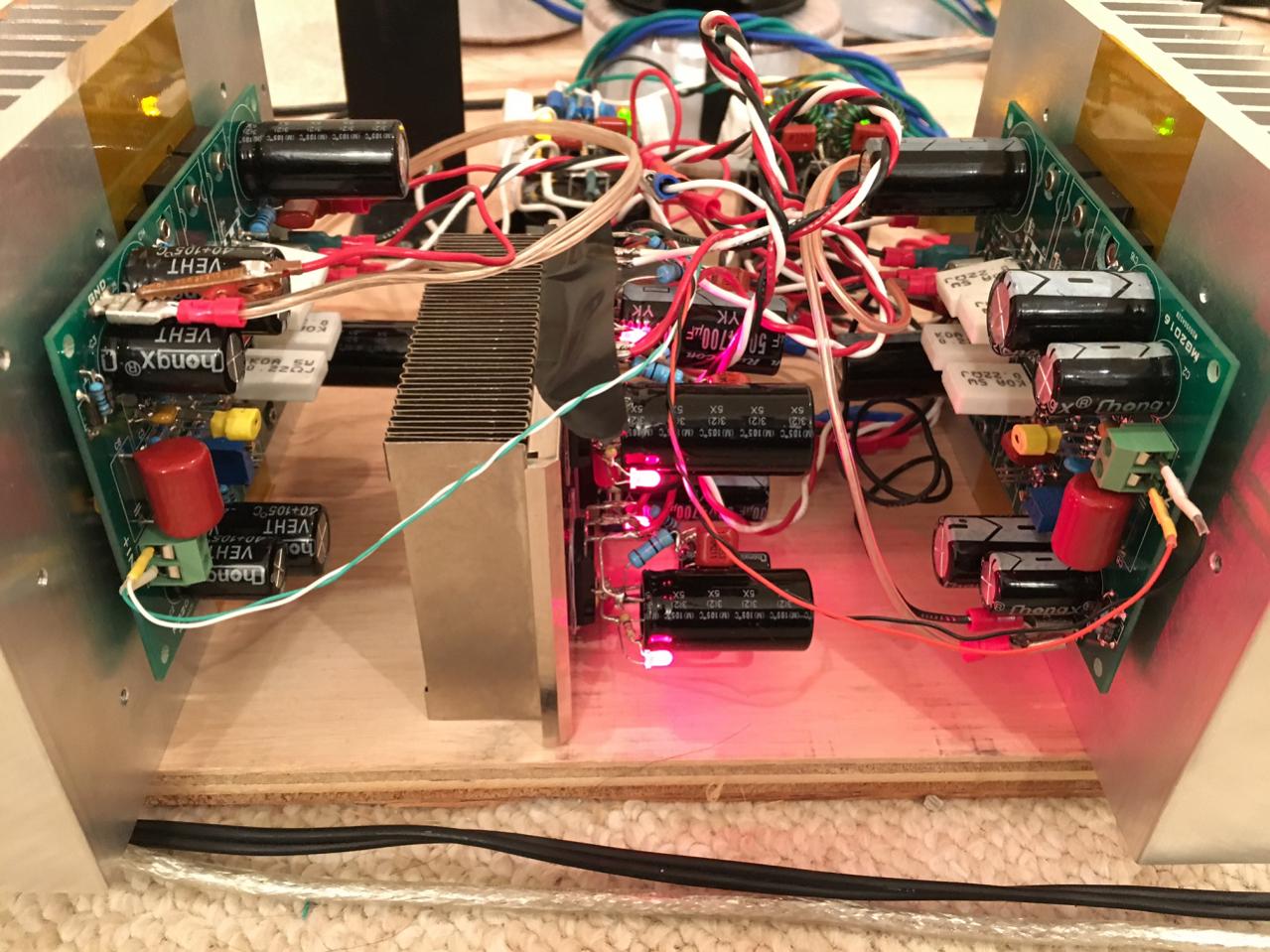
Build this cap multiplier and and have a listen - it makes a difference. Easy Peasy - no excuse not to. You don't need a PCB. In fact, I think a PCB will take more space here all you need to do is bolt the IRFP to some convenient location inside your case for some heat dissipation (it's not much). Solder up the 3 pins which hold it all together.

Last edited:
Are there limitations for higher voltages or changes in component parameters (+-50V) or can the same circuit be used?
IRFP240/9240 are rated 200+ volts? Make sure your electrolytic caps are rated for the voltage and should work.
If someone had a clever way to clamp the MOSFET gate to ground quickly in case of DC at speaker that would be a great speaker safety protect feature as Dadod pointed out.
Excellent!Hi X,
Some little exercice......
Marc
I'm a bit puzzled as to the inclusion of a 4,700uF cap on the OUTPUT of the C-Mx even though it's written in juma's circuit with a 47,000uF ripple cap after the diode bridge - IMO, this is a bit counterproductive - would possibly be better with 470uF or even smaller - maybe I'm missing something?
I'm a bit puzzled as to the inclusion of a 4,700uF cap on the OUTPUT of the C-Mx even though it's written in juma's circuit with a 47,000uF ripple cap after the diode bridge - IMO, this is a bit counterproductive - would possibly be better with 470uF or even smaller - maybe I'm missing something?
It seems you need some capacitance on the output and the more the better. Isn't that the capacitance that is being "multiplied"?
Here is another Juma CM:
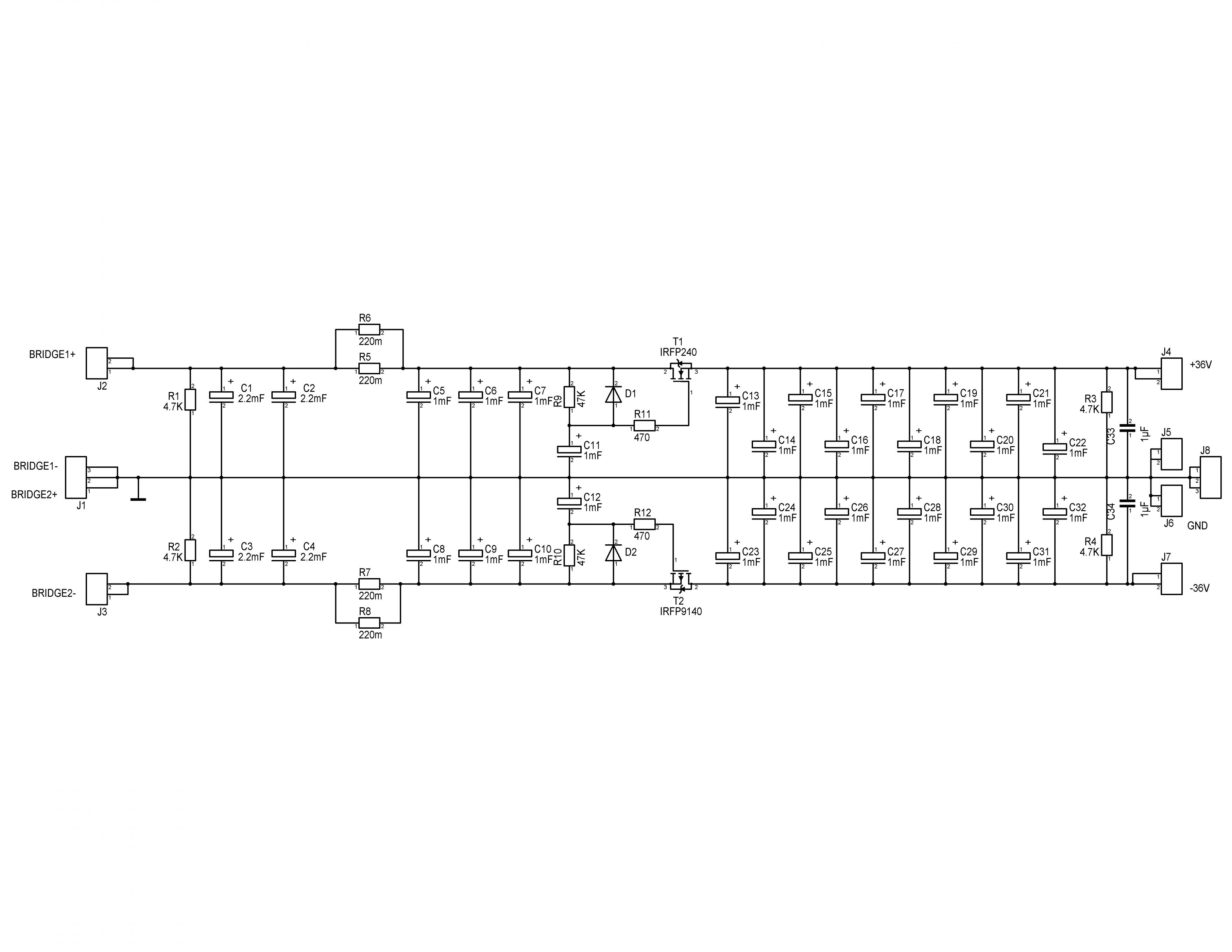
Maybe because rds on of these fets can be over 1 ohm at these operating points? I know the gate capacitor is supposed to be "multiplied" , however, those caps now have an esr of the series resistor as far as the gate see's them. It may be effective at filtering the power supply side but seems to me would have quite high ac impedance from the load's point of view.
The cap being 'multiplied' is C11/C12 - the 1mF (1,000uF) - the larger values don't actually guarantee better performance even tho the ripple maybe at vanishing amounts - the impedance and the very nature of the caps contribute to the overall product (ie. a better power supply)
I remember using some 6m8F (6,800uF) BHC Slit Foils on the O/P of the Evil C-Mx for driving the F5 in the mids/tops - can't get much better than that, I figured, but alas, they seemed to fatten the sound up far too much and didn't sound any better than standard Nichicons - I ended up using some 220uF Nichicon Bipolars -
I must admit that this won't be the same for everyone at all but just an illustration to show that smaller sized caps on the O/P of C-Mx MAY be better than big caps - just something to keep in mind to try - the last IRFP C-Mx I think I used a 100uF film cap on the O/P to see if this sounded something special - this is still in my DAO headphone amp and is 'a keeper', as they say - maybe a bit 'over the top' but ...
Mind you, I'm no guru so read the above opinions with a fair amount of scepticism
I remember using some 6m8F (6,800uF) BHC Slit Foils on the O/P of the Evil C-Mx for driving the F5 in the mids/tops - can't get much better than that, I figured, but alas, they seemed to fatten the sound up far too much and didn't sound any better than standard Nichicons - I ended up using some 220uF Nichicon Bipolars -
I must admit that this won't be the same for everyone at all but just an illustration to show that smaller sized caps on the O/P of C-Mx MAY be better than big caps - just something to keep in mind to try - the last IRFP C-Mx I think I used a 100uF film cap on the O/P to see if this sounded something special - this is still in my DAO headphone amp and is 'a keeper', as they say - maybe a bit 'over the top' but ...
Mind you, I'm no guru so read the above opinions with a fair amount of scepticism
I consider Juma a "guru" of amp design, so if he uses big caps on the output of his CM, I trust him that it works. Anyhow, it's simple enough to run a simulation to see effect of size of output cap.
Jmhill, you have a DAO HA? Which CM circuit are you using can you please provide a link?
I just made a small Juma style CM for a small F5 head amp and find that it is a great filter for noisy dual 19v SMPS bricks vs a toroidal trafo and bridge and caps.
Amp is dead silent and measured 0.0mV AC output with no input. It's a slick little compact class A head amp.
http://www.diyaudio.com/forums/pass-labs/271926-f5-headamp-103.html#post4887992
This is running 165mA bias at about 16.3v rails:
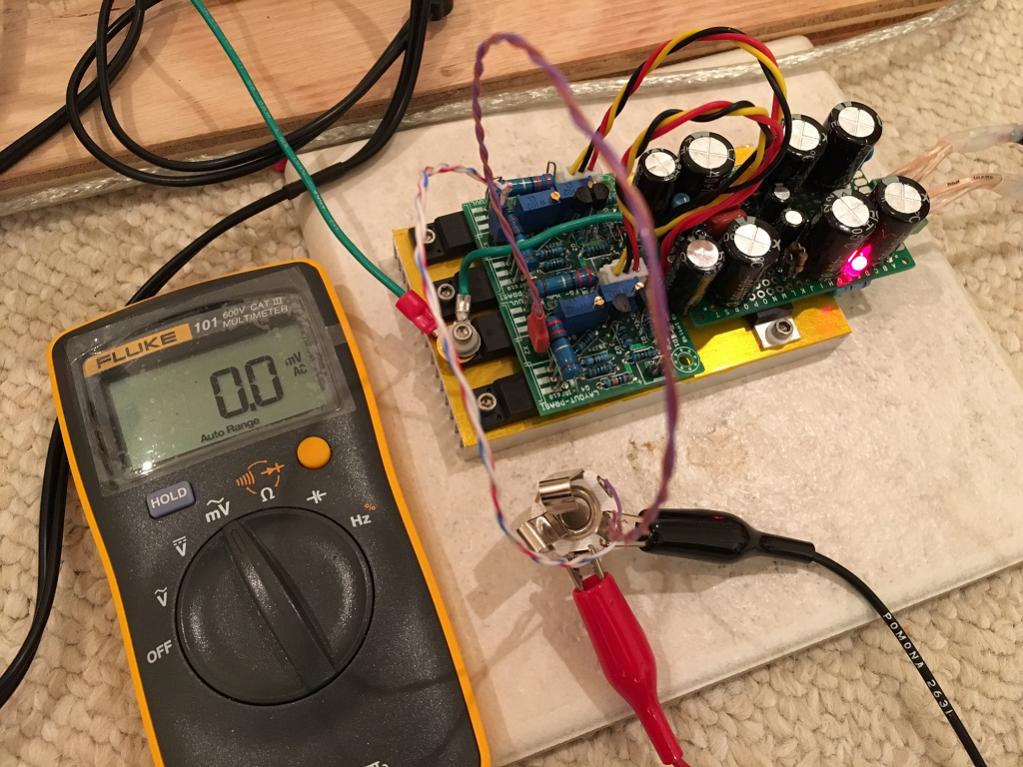
Jmhill, you have a DAO HA? Which CM circuit are you using can you please provide a link?
I just made a small Juma style CM for a small F5 head amp and find that it is a great filter for noisy dual 19v SMPS bricks vs a toroidal trafo and bridge and caps.
Amp is dead silent and measured 0.0mV AC output with no input. It's a slick little compact class A head amp.
http://www.diyaudio.com/forums/pass-labs/271926-f5-headamp-103.html#post4887992
This is running 165mA bias at about 16.3v rails:

I tried a couple of the more sophisticated C-Mx Complete Cap Multiplier (by Miles) and a simplified one by PMI and Jason Keutermann continued on with this - and then there is the quite simple K-Multiplier - plus many others from years gone by
I think there's not that much differences between them but it does depend on the circuit you apply them to - for example, I replaced the 'beefed-up' Salas shunt Reg on the DAO with a rather over the top version with the 'Mr Evil" multiplier and this definitely suited the circuit/application better - there was little difference between this one and the Simplified PMI or the jkeutermann but when operating with the F5 amp supply, the ones using the IRFP fets seemed better in this amp
I did get some boards for the K-Mx and they function quite well but haven't applied them to power supply yet - will see how these operate with the new Aikido preamp maybe
Bottom line, from my perspective anyway, is that the different arrangements of components broadly classified under the Cap Multiplier umbrella will vary in their performance - have a look at the posted plan for the 'keantoken' K-Mx where he describes 3 different pass transistor for different current loads - quite a neat piece of work there, and can be extended to other arrangements, no doubt.
... I hope this is somewhat useful - I love these C-Mx things - best bang-for-the-buck in electronics ever, IMO.
I think there's not that much differences between them but it does depend on the circuit you apply them to - for example, I replaced the 'beefed-up' Salas shunt Reg on the DAO with a rather over the top version with the 'Mr Evil" multiplier and this definitely suited the circuit/application better - there was little difference between this one and the Simplified PMI or the jkeutermann but when operating with the F5 amp supply, the ones using the IRFP fets seemed better in this amp
I did get some boards for the K-Mx and they function quite well but haven't applied them to power supply yet - will see how these operate with the new Aikido preamp maybe
Bottom line, from my perspective anyway, is that the different arrangements of components broadly classified under the Cap Multiplier umbrella will vary in their performance - have a look at the posted plan for the 'keantoken' K-Mx where he describes 3 different pass transistor for different current loads - quite a neat piece of work there, and can be extended to other arrangements, no doubt.
... I hope this is somewhat useful - I love these C-Mx things - best bang-for-the-buck in electronics ever, IMO.
- Home
- Amplifiers
- Power Supplies
- Juma's Easy-Peasy Capacitance Multiplier
